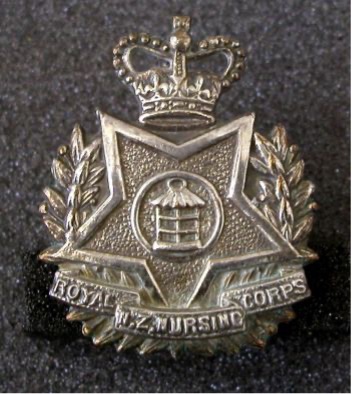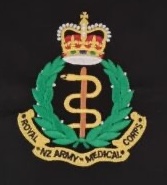THE BRITISH OVERSEAS RAILWAYS HISTORICAL TRUST
|  |
New Zealand Army Medical Services
Royal New Zealand Army Nursing Corps

The Royal New Zealand Nursing Corps (RNZNC) is a corps of the New Zealand Army. The corps was initially formed in 1915 from civilian nurses who volunteered for service during World War I, and who were granted honorary officer ranks. A Nursing Reserve had been formed as part of the New Zealand Medical Corps on 14 May 1908. Today, the corps is an officer-only corps that consists of commissioned officers who are employed for their specialist skills and knowledge as registered nurses, the corps works in conjunction with the Royal New Zealand Army Medical Corps and the Royal New Zealand Dental Corps to promote "health and disease prevention" and to provide "care for the wounded and sick". Nursing Officers in the New Zealand Army can be employed broadly in primary health, perioperative, surgical or emergency settings, which can see RNZNC personnel providing health services in a garrison health centre, in a civilian practice, or deployed on operations.
Up until 1945, the corps was a part-time only formation with personnel being called up for full time service during times of war only. However, since then the RNZNC has developed into a corps of both Regular and Reserve personnel. Throughout the corps' history, personnel have been deployed to various operational theatres. Aside from service during World War I and World War II, the corps has deployed personnel support to operations during the Vietnam War, and more recently to peacekeeping operations such as those in Bosnia and Somalia in the 1990s, the 1991 Gulf War, the East Timor intervention, Bougainville, Iraq and Afghanistan.
Royal New Zealand Army Medical Corps

History
The New Zealand Medical Corps (NZMC) was established in May 1908 to provide a reserve of medical personnel should that be required in the event of war. After the declaration of war in August 1914, the New Zealand government sent a small contingent of medical staff to Samoa to take over the hospital at Apia. The contingent was made up of four medical officers, two dental surgeons, 67 non-commissioned officers and seven nurses.
As the war progressed and the number of casualties increased, it became apparent that more medical personnel were required to treat them. James Allen, Minister of Defence, offered to send medical personnel to a stationary hospital in Egypt, including eight officers and 50 nurses. New Zealand medical personnel went on to serve in Samoa, Egypt, Palestine, Gallipoli, France, Belgium, Serbia and Great Britain. This is known as the 1st New Zealand Expeditionary Force.
As part of the 2nd New Zealand Expeditionary Force, in 1939 three General Hospitals, three Field Ambulances, and a Convalescent Depot were dispatched to the Middle East (and 1 General Hospital and 5 Field Ambulance to the United Kingdom with the Second Echelon, temporarily) along with the remainder of the force.
On 12 July 1947 (Gazette No. 39/1947) the NZMC was granted a Royal Warrant and became the Royal New Zealand Army Medical Corps (RNZAMC). Queen Elizabeth The Queen Mother was the Colonel-in-Chief from 1977 to 2002. Later Prince Richard, Duke of Gloucester was appointed the Royal Colonel-in-Chief and presented the RNZAMC with the 'Prince Richard Banner'.
During the Cold War, the Army maintained hospitals and field ambulances. In 1991, 2 (GH) Field Hospital, tracing its descent from No. 2 General Hospital originally formed at Walton-on-Thames, celebrated its 75th anniversary. The Forward Surgical Team was deployed to East Timor while serving with INTERFET from 1999.
Museum
Medical services are addressed in the National Army Museum.
|
| Registered Charity No 290944 | Company Limited by Guarantee No 1862659 |